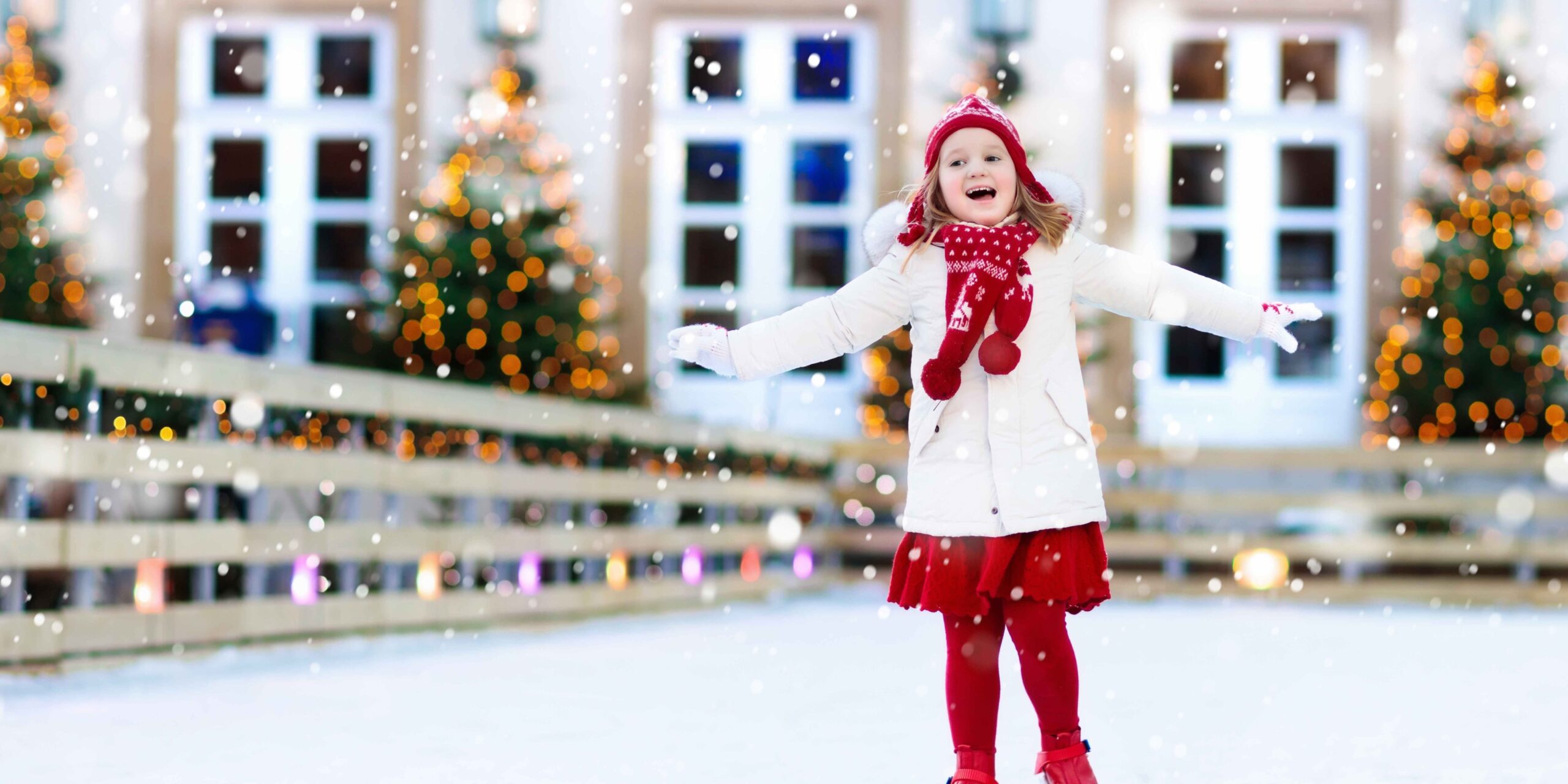This post may contain affiliate links. We may earn money from products we link to in this post.
Sometimes kids don’t find the activity of ice skating all too interesting, even though I know that you know that it’s one of the best winter activities out there.
While there are other other winter sports to select from, ice skating is inexpensive (my son will be using the same pair of ice skates for a second winter this year).
Ice skating is frequently free to participate in after purchasing ice skates and helmets for yourself and your children, and it is excellent for developing your children’s gross motor skills and coordination.
The first step toward becoming a skating family is to locate decent skates that are comfortable and simple to put on. I recommend starting with local thrift stores because your children’s feet will grow and you don’t want to buy a brand-new pair of ice skates every year.
Having said that, while my husband and I both bought secondhand skates, we decided to buy new skates for our son last year so that we could have molded ones with detachable liners.
They are warmer and more comfortable than standard hockey skates, have no laces (and thus are significantly faster to put on), and are expandable over a two to three size range (meaning they will last two to three seasons!).
How to have fun while ice skating
Play Games
Green Light, Red Light As you race/toddle to the finish line, skate when the leader says “green light” and stop when the leader says “red light.”
ABC Investigation. Scatter foam or plastic ABC letters on the ice and have the kids look for them in alphabetical order. This is excellent practise for bending over and standing up again to pick up each letter, and your children will also be working on early literacy skills!
The Chocolate Hunt Scatter chocolate eggs, kisses, or other candy around the ice for the youngsters to pick up, just like the ABC Hunt game.
Game of Stuffed Animals Put a lot of plush animals on the ice and a plastic bin at the far end. Children must carry each animal down the ice and place it in the bin; this must be repeated until all creatures are in the bin. A plastic bin is very useful for bringing animals to the ice.
Set up an obstacle course for the kids to skate through using pool noodles, hula hoops, pylons, or other objects.
Draw lines on the ice and instruct the children to follow them. Alter it using squiggly lines, circles, snails, and so on.
Ice hockey! Set up some nets or pylons and have the youngsters practice transferring weight from one foot to the other by kicking a ball. Ice soccer is played as a team or individually, with the ball being kicked up and down the ice.
Hockey! Hockey sticks are popular among children. Bring your own plastic hockey sticks or purchase child-sized wooden sticks. Encourage the kids to hit a soft puck or ball around the ice. Again, you can play hockey as a team or with a child.
Make sure Gear Fits Well
If this is the case, most preschoolers should be able to tell you. It’s not fun if your feet hurt, as it is with most sports!
If you have any doubts, go to a sports store and get fitted by a skate professional. Toddlers are fortunate in that they can wear boots with the basic Bob skates (a blade that fits on to a regular winter boot).
Make Sure Kids Are Warm
Nobody enjoys winter activities if they are chilly; I know I don’t! Ski pants should be worn by children learning to ice skate. Ski pants will keep kids warm and cushion their falls (there will be many).
Waterproof gloves are required, and a helmet liner or light toque is also advised, even when skating indoors.
My youngster wears a child-sized Buff like a balaclava. If you become cold on the ice, try wearing a long’skating coat,’ which is my name for a garment that covers your buttocks. Even better if it’s made of down!
Stay A Short While
Skating is difficult for small children! My family and I went ice skating today morning, and my son struggled to climb a little hill on our afternoon trip. Skating for half an hour is sufficient for beginners.
Bring a sled and then take the youngsters for a trip around the pond or rink. Allow children to play and climb on the snow mountains adjacent to the pond. Allow them to play among the trees. Allow them to play and then return to skating on another day.
Take Lessons
It’s incredible what six weeks of classes can do for your child’s self-esteem. Last winter, my son was not a big admirer of ice skating. I enrolled him in a month of classes, and he was no longer the only one suffering on the ice. There was a full class of other kids learning to skate with him (and the instructors knew a lot more games than I did!).
Bottom Line
A CSA-approved hockey helmet is the bare minimum of protection. Hockey helmets are tested for repeated collisions from both large and tiny objects such as pucks, sticks, and boards. Using a hockey face mask when learning to skate is also recommended for safer skating and has been proven to save teeth!

